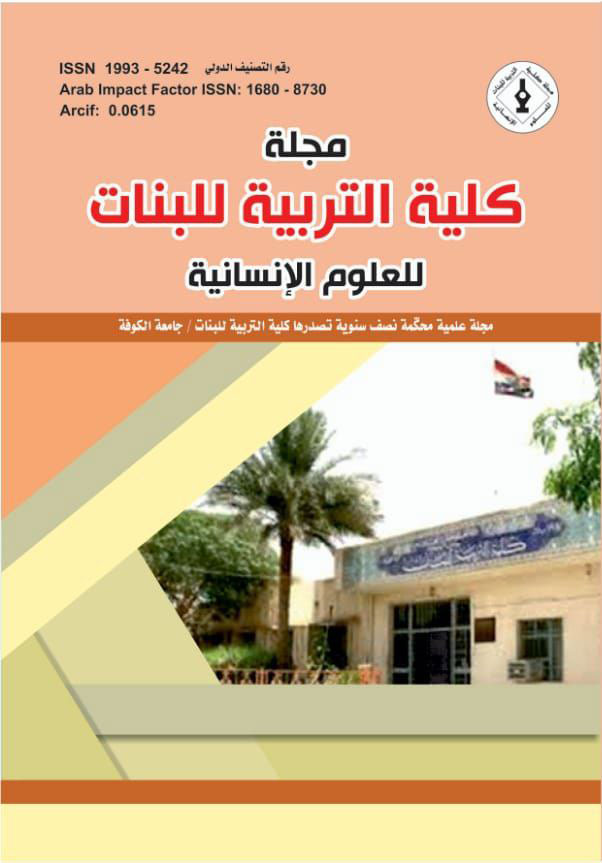The general features of the government of Imam Ali bin Abi Talib administrative, economic and financial in Kufa
DOI:
https://doi.org/10.36327/ewjh.v1i29.12971Keywords:
Caliph Imam Ali bin Abi Talib, the capital, Kufa, Administrative aspects, political aspects, financial aspects, economic aspectsAbstract
Abstract
Praise be to God, much praise, and prayers and peace be upon the Master of the Messengers, Muhammad, and upon his pure and pure family and his chosen companions
After the death of the Messenger, may God’s prayers and peace be upon him, many events hit the Islamic nation, which almost split from it. Some of the Muslims broke the pledge of allegiance to Ghadir Khum, in which they pledged allegiance to Imam Ali in the presence of the Messenger, may God’s prayers and peace be upon him and his family, and their gathering in the shed of Banu Sa’idah, and they unanimously agreed on the pledge of allegiance to Abu Bakr al-Siddiq as the caliph. For Muslims, Imam Ali did not take the initiative to rebel against that despite the call of some Muslims to do so, for several reasons, the most prominent of which is that Muslims are new to Islam and fear of a civil war between Muslims and the division of their unity, so Imam Ali used piety in that.
As a result of the differing policy followed by Caliph Othman bin Affan towards Muslims, especially the financial policy, where the money was generously distributed to those close to him and his relatives from the Banu Abi Al-Aas and depriving some Muslims of that money, this policy generated a grudge and hatred for the Caliph that led to his killing (35 AH / 655). AD), and as a result of this painful incident and in order to preserve the unity of Islam and Muslims, Muslims chose Imam Ali as the successor to the Messenger of God after the Caliph Othman, but he faced many obstacles and difficulties, most notably confronting his opponents seeking to undermine and overthrow his government, by preparing for the wars that he mobilized. His enemies were among the opponents to overthrow his government, the most prominent of which was the Battle of Al-Ajmal (36 AH / 656 AD), and after the battle was resolved in his favour, he initiated a series of administrative, financial, political and military reforms, most notably the transfer of the capital from Medina to Kufa, with the reform of the financial, economic, political and military system. The conspiracies at this point, but continued against his government by his enemies, Muawiyah Ibn Abi Sufyan, the governor of Othman on the Levant, rebelled against him and refused to obey his orders to step down from his position,
until he gathered An army from the people of Levant to prepare to fight Imam Ali, and the Battle of Siffin took place between them (37 AH / 657 AD), and what resulted from it after arbitration in the emergence of the Khawarij sect that tired the Islamic caliphate in the wars that its leaders led against it, until this squad took chances to kill Imam Ali and indeed This happened at the hands of one of its followers in the year (40 AH / 660 AD).
Studying the personality of Imam Ali and his government requires volumes due to the size of this great personality, but in my modest research in which I used various sources and references, I shed light on part of its aspects.
The research included three sections: the first topic included the administrative aspects of the government, the second topic included the economic and financial aspects, and the third topic covered the military and security aspects.
Downloads
Published
How to Cite
Issue
Section
License
Copyright (c) 2023 Assistant Professor Dr. Abdul Amir Issa Al-Araji

This work is licensed under a Creative Commons Attribution 4.0 International License.
which allows users to copy, create extracts, abstracts, and new works from the Article, alter and revise the Article, and make commercial use of the Article (including reuse and/or resale of the Article by commercial entities), provided the user gives appropriate credit (with a link to the formal publication through the relevant DOI), provides a link to the license, indicates if changes were made and the licensor is not represented as endorsing the use made of the work.









